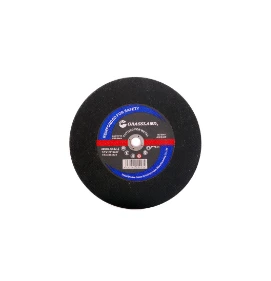Understanding Grinding Wheels for Metalworking
Grinding wheels are essential tools in the metalworking industry, playing a crucial role in processes such as cutting, grinding, and polishing metal surfaces. They are composed of abrasive particles that are bonded together to create a solid, circular shape. The selection of the appropriate grinding wheel can significantly affect the quality of the workpiece, the efficiency of the operation, and the safety of the machinery and operator. This article will delve into the various types of grinding wheels used for metal, their applications, and tips for choosing the right wheel.
Types of Grinding Wheels
1. Aluminum Oxide Wheels One of the most commonly used grinding wheels for metalworking is the aluminum oxide wheel. Known for its durability and versatility, this type of wheel is suitable for grinding ferrous metals such as steel and iron. The structure of aluminum oxide provides excellent cutting performance, making it ideal for applications where speed and efficiency are critical.
2. Silicon Carbide Wheels Silicon carbide grinding wheels are typically used for non-ferrous metals, such as aluminum, brass, and bronze, as well as for hard materials like ceramics and glass. They are harder and more brittle than aluminum oxide wheels, providing a sharper cut. These wheels are particularly beneficial for applications requiring finer finishes and precision.
3. Diamond Wheels For extremely hard materials, diamond grinding wheels are the go-to choice. Diamond is the hardest known material, making these wheels suitable for grinding extremely hard alloys and composite materials. They offer superior longevity and performance, but their cost is significantly higher than traditional grinding wheels. Thus, they are usually reserved for specialized applications.
4. Cubic Boron Nitride (CBN) Wheels Similar to diamond wheels, CBN wheels are designed for specific applications involving hard materials, particularly high-speed steels. CBN has a unique property that prevents it from reacting with ferrous materials, making it an excellent choice for grinding steel without degrading the wheel.
Applications of Grinding Wheels
Grinding wheels are used in a wide range of applications in metalworking, including
- Sharpening Tools Whether it's chisels, saws, or blades, grinding wheels play a vital role in keeping metal cutting tools sharp and effective. - Surface Grinding They are used to create a smooth, flat surface on metal workpieces, which is crucial for achieving precise dimensions and finishes. - Preparation for Welding Proper surface preparation is essential for welding. Grinding wheels are used to clean and smooth the edges of metal pieces before they are joined together. - Deburring The removal of sharp edges and burrs from cut metal is crucial for safety and functionality. Grinding wheels are effective for deburring applications, ensuring that the final product is safe to handle.
grinding wheels for metal

Choosing the Right Grinding Wheel
Selecting the appropriate grinding wheel requires careful consideration of several factors
1. Material Identify the type of metal you will be working on. Ferrous metals (iron and steel) typically require aluminum oxide wheels, while non-ferrous metals are best suited for silicon carbide wheels.
2. Grit Size The grit size refers to the size of the abrasive particles in the wheel. Finer grits (higher numbers) produce smoother finishes, while coarser grits (lower numbers) remove material more quickly. Choose a grit size that matches the finish required for your project.
3. Wheel Hardness The hardness of the wheel affects its durability and cutting ability. Softer wheels are better for harder materials, while harder wheels work well with softer materials.
4. Operating Speed Ensure that the grinding wheel's maximum RPM (revolutions per minute) rating is compatible with your grinder's speed. Improper RPM can lead to wheel damage or, worse, accidents.
5. Application Type Determine whether you're performing rough grinding, fine grinding, or polishing. Different applications may require different types of wheels.
Conclusion
Grinding wheels are indispensable tools in the metalworking industry, with various types designed to cater to specific applications and materials. Understanding the characteristics of different grinding wheels and knowing how to select the right one is crucial for achieving optimal results. With the right grinding wheel, operators can enhance productivity, improve surface finishes, and ensure the longevity of their tools and machinery. Always prioritize safety by adhering to manufacturers’ guidelines and operating procedures when working with grinding wheels.
Post time:Dec - 15 - 2024

















